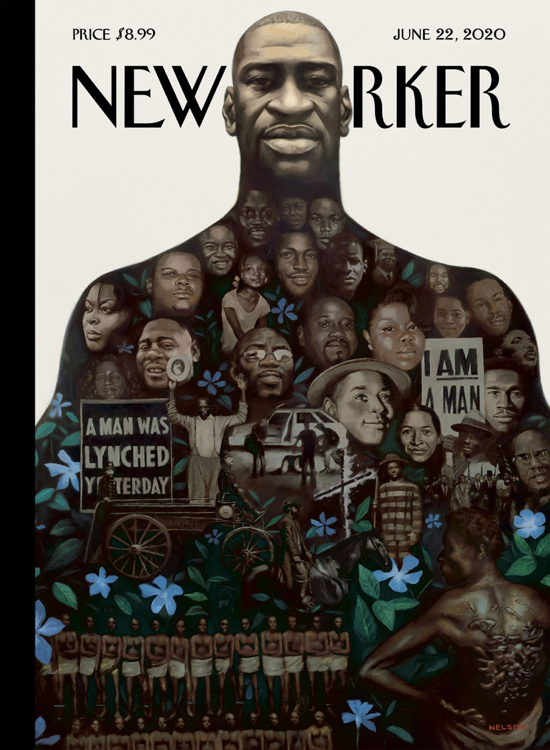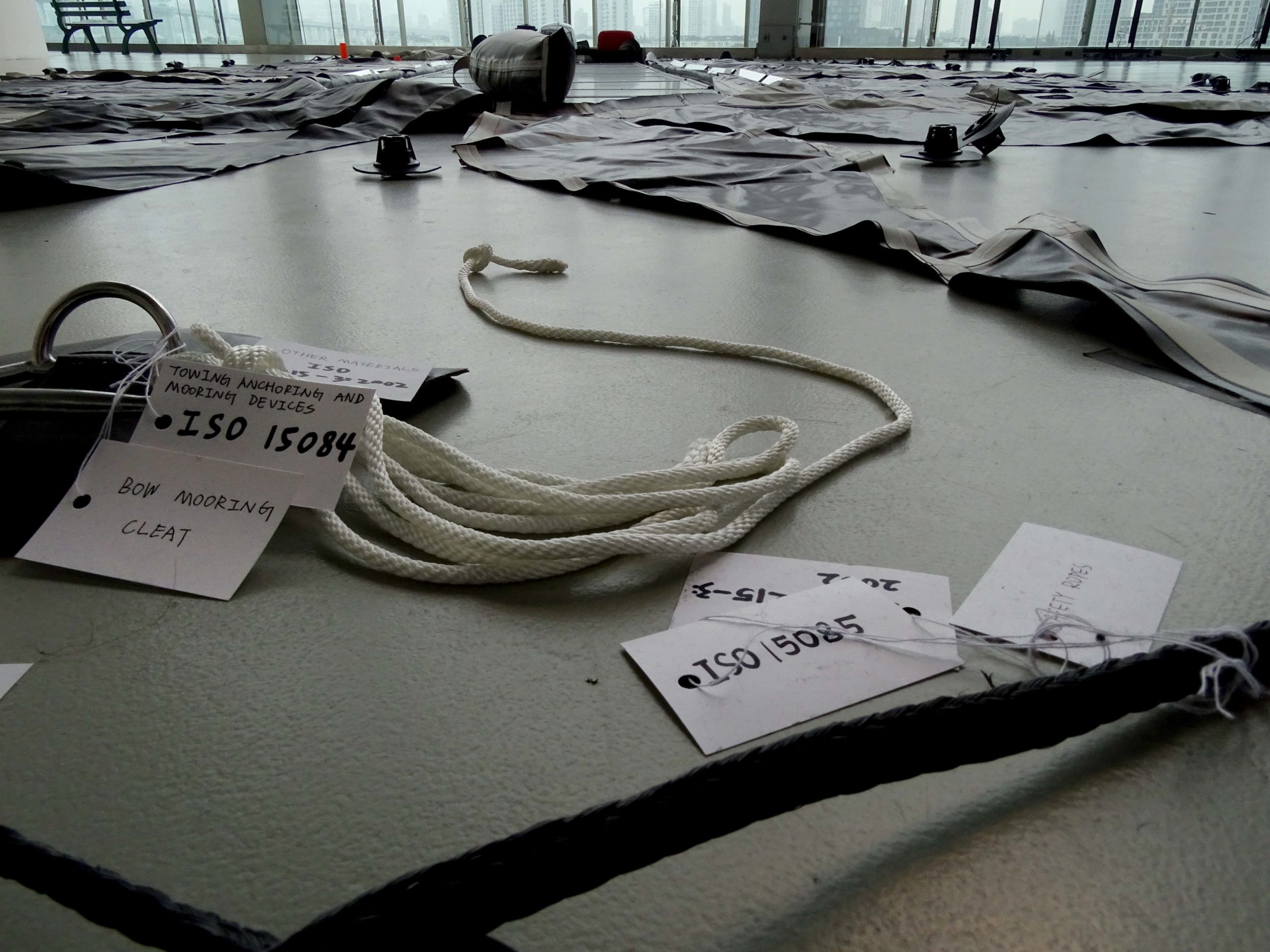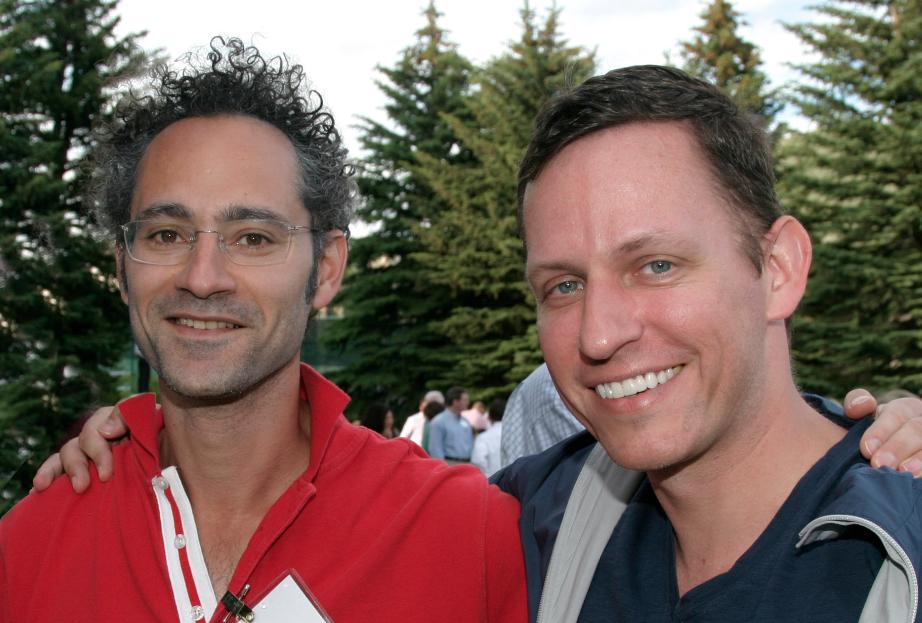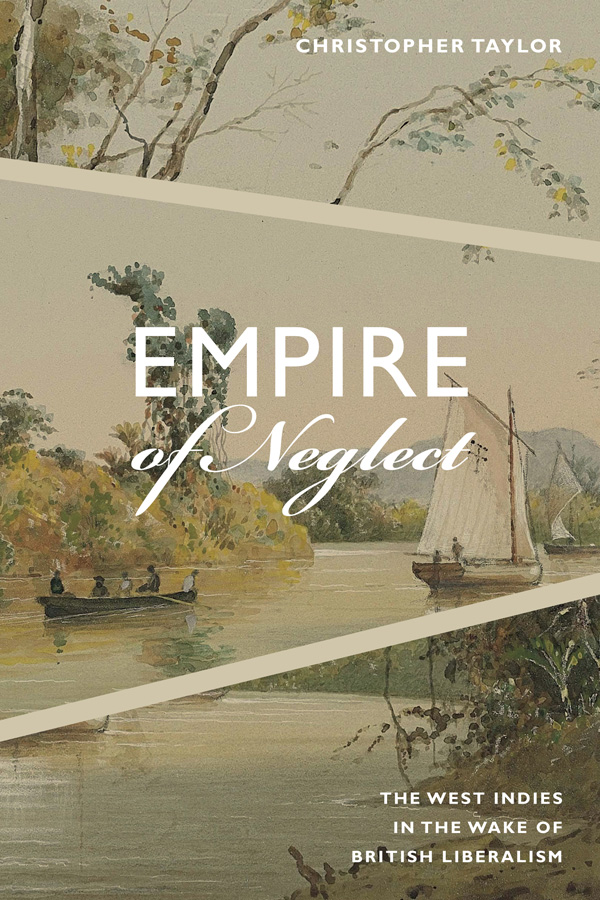This essay has been peer-reviewed by “Frictionless Sovereignty” special issue editor (Ryan Bishop), and the b2o: An Online Journal editorial board.
The question of sovereignty is poorly formulated if we confuse it with the autonomous decision of an individual (Bataille 1989: 311)
On 2nd August 2007, a Russian submersible mission (MIR-1, launched from the Akademik Federov) planted a flag at the estimated North Pole, on the Arctic seabed. Part of the activities of International Polar Year, its purpose was the exploration of the Russian continental shelf, discovering how much sea or seabed Russia could claim as its own.[1] Since then, popular, technical and academic writings have mused on the strange situation of sovereignty in the polar regions. Ownership of territory in either region is heavily contested, as both sea and land ice melts, freeing up the dream of access to colossal mineral reserves. But as I hope to demonstrate below, sovereignty couched in terms of possession, performative power and control will not work in the Antarctic. I will restate the seemingly obvious exceptionality of that continent’s situation, in order to supersede the apparently postcolonial critique posited by Klaus Dodds in particular, wherein there is nothing exceptional in the case of Antarctica. I will argue that our models of sovereignty, as applied to the polar regions, but especially in the Antarctic, fall dramatically short when they do not recognize the exceptional, or should I say, exemplary, nature of sovereignty that pertains there. I turn to Carl Schmitt’s anti-liberal presentation of sovereignty, thereby moving beyond the simplistic attribution of sovereignty to ownership and control, whether under a ‘sovereign’ parliament, people or body of law. Like Derrida, in his later writings on the borders of law, I presume a paradoxically rethought Rousseauian reading of Schmitt that accepts the latter’s proto-deconstruction of sovereignty and its legal basis and function, whilst rejecting the implication that therefore we should have a strong executive leader who embodies the sovereign decision-making capacity. This rejection is not just based on ideological rejection of Schmitt’s views, but also on a refusal of his retention of decisionist faith in subjective priority over a subsidiary object world. Ultimately, I believe that in traversing Schmitt’s thinking about the “nomos”, or legal terrain, of territory, we are brought to a position where we can grasp the strangeness of the Antarctic, without suffering any Romanticist delusions about its inherent hostility to humanity even as it stands as a paragon of the world ecology.
Sovereignty in the Antarctic is a dynamic process that addresses the fundament (and absence thereof) of sovereignty. Beyond banal difference intuited through the apparent a-biotic nature of that continent lies a deeper difference that emerges after reflection on precisely how the Antarctic resembles (or not) other polities. To this end, I consider Jessica O’Reilly’s model of the “technocratic Antarctic”, which identifies the ways in which the Antarctic does function politically, rather than imagining it as a place either so special it cannot be considered in any normative way, or as so normal it cannot be thought of in its specificity. I reintroduce the thought of Georges Bataille on sovereignty as loss, as willed absence, along with Kathryn Yussof on extractivism and excessive anti-geology.
In the end, what is ‘polar’ about polar sovereignty will be seen to be not about physical poles, but about the fluctuating quality of that sovereignty, as an example of the heterogeneous, “characterized by the strong polarization of its elements” (Bataille 2018: 31). Where Bataille intends this idea to apply to the opposition of pure and impure, high and low, I extend the idea to the double exceptionality of the Antarctic. The first of these (pure, high) is the basic legal distinction between it and the rest of the global legal system, the second (impure and low) is the resistance the continent has to that system, as it is a refusal, a renunciation of sovereignty that Bataille will identify as true sovereignty. He intended the method of heterology to extend beyond the realm of sacred objects, actions and situations, imagining a world of oppositional yet non-dialectical ‘outsides’ to the normatively formed world. These trade against one another as well as against the standard ‘inside’ of rationalistically conceived, liberal laws, morals, structure and habits. So in this instance, the norm is a legally sovereign power with whatever rights accrue to it, legitimated by international law norms. The non-norm is the absent sovereignty of the Antarctic, with one ‘pole’ the consensual agreement not to own the continent. The other ‘pole’ is the deconstructed sovereignty that actually persists in the distorted, experimental yet also excessive or “heterogeneous processes” (Bataille 1985: 156) of sovereignty that play out in the Antarctic.
When MIR-1 landed its flag, it was playing out a standard move in the ongoing spatial-legal conception of turning bare space into territory, i.e. bringing it under control. Several existing States claim rights over portions of the undersea Arctic, based on already-inhabited proximate land. All claimants have inhabitants that live inside the Arctic circle, and so this is not a colonialism based on a new conquest over indigenous peoples (leaving aside debates about existing occupation, ownership and indigeneity). It is a form of primordial colonialism, spatial control, but one that post-colonialism finds hard to grasp, not least because we could imagine it to be post-colonial colonialization. Schmitt, alternatively, identifies the drawing of lines, the process of enclosure, as itself an act, a sovereign act of power. This does not exhaust his ideas on the matter, particularly where the law of the sea is concerned, but actually the Arctic is only witnessing one level of sovereignty discussion, the most basic (or wrong, as Rousseau and Schmitt would concur), which is about ownership of already-existing, already-defined spaces. Nothing novel or unusual is playing out in the Arctic: while five states have coastal rights that extend to 200 miles from the end of the continental shelf, the rest is under the jurisdiction of the UN convention on the law of the sea.[2] There is no sovereignty hole, in legal terms, over or under the Arctic.
The Antarctic is very different, firstly because it has no indigenous human population. Any colonization we could refer to must refer us back to the colonization that is all human occupation of territory, as opposed to the age of world-domination, extractionism and slavery propagated by leading European powers between 1492 and whenever (or if) we deem this period to have ended. The continent was unattainable, except to the imagination, to the extent that the first documented sightings were in the late 18th century, incidental discoveries made by representatives of leading colonial powers such as Britain and France. In the early 19th century, sightings of and landings on the core continent were made by Russian and American ships, as well as further voyages made by European nations. But the lack of obvious colonial reward meant that there was a long gap until renewed attention in the late 19th century led to a scramble to establish territorial control through exploration. Once again, a long gap ensued after the 1910s, with some interest in the course of World War Two, and the intervening period notable mostly for Richard E. Byrd’s overflying expeditions. It was only the International Geophysical Year of 1957-58 that sparked nations’ interests in controlling the spaces of the Antarctic. The Soviet Union and the USA were interested in ownership but had no legal claim through either discovery or occupation, so pioneered the method of depositing bases into territory that could be claimed later. Their vested interest was also part of how the Antarctic would end up as a landmass outside of normal banal sovereign claims, a status confirmed in the 1959 Antarctic Treaty.
The Antarctic has never been fully integrated into the global régime of existing power hierarchies and nation-based histories, even if it is fully caught up in a more Foucauldian power network based on intersections between power and knowledge, and power as a system of actions, laws, discourses, technical procedures and protocols. Even today it is sparsely inhabited–there is no indigenous population as such, but a transient population of between 1000 and 4000 mostly scientists, with 25000 or so tourists visiting every year. But in terms of national presence, it is more like a freeport, a department store full of concessions, or a world science fair. Thirty countries have some sort of research base there, 68 in total (see O’Reilly 2017: 67), and not only in their ‘own’ zones.
Territorial claims have been suspended since the creation of the Antarctic Treaty (which came into force in 1961), the founding document for the Antarctic Treaty System. This ‘system’ ties together a group of treaties that have accumulated over time, and allows space for further development. The Antarctic Treaty System (ATS) is the model of governance for the continent, and is trans-, supra- and non-national in nature, with 53 countries signed up to the System.[3] This system suspends all territorial claims, in favor of a neutralized sovereign space (not a space of pooled sovereignty).[4] There are extensions of rules and subsequent protocols, but the Antarctic is designated under the original treaty, and ensuing treaty system, as a neutral, demilitarized non-nuclear zone.[5] Countries with territorial claims have made sure to place bases that are permanent within the relevant zones, as have many others. The discourse on Antarctica is rife with discussion about either land claims or about mineral wealth, particularly offshore (the ATS extends ‘northward’ to 60% south and controls exploitation of wildlife too).[6]
In the far south, there seems to be an almost utopian model of future environment-based governance. Alternatively, some argue, what we see in the Antarctic is only a mock-up of post-sovereign co-existence and instead it is a zone of neocolonial, retrocolonial and postcolonial tactics. Klaus Dodds and Mark Nuttall refer to “polar orientalism” (2016: 145), even if they also question claims that there is a current or new “scramble” for the Antarctic. Furthermore, far from being outside of the rest of the world, the Antarctic does have a legal régime, and cannot be said to be autonomous, separate from the world.[7] All of the research stations are supplied and populated from elsewhere. The culture of the Antarctic is global before the dwellers arrive, while they are there and after (O’Reilly 2017: 174). In addition to the treaty, the dwellers in bases are subject to control of their actions by their ‘own’ government, while the work that is the reason for inhabiting the continent is networked globally. Both polar regions though, are thought of in very standard terms of sovereignty, as opposed to a more Schmittian way of thinking the exception, and sovereignty as the capacity to exert power based on the decision of exemplarity. Wygene Chong, for example, observes that sovereignty is “the ability of a state to exercise its supreme authority over territory” (Chong 2017: 436); Ruth Davis regards national sovereign rights and claims as being protected, if not ratified (Davis 2014: 289).
So while sovereign rights are seen as contested, polar discourse reverts continually to national territorial claims in a way that barely captures the nature of sovereignty in the Antarctic. Schmitt’s idea that sovereignty is the power to decide whether an exceptional situation prevails (such as war, famine, ecological catastrophe, states of emergency in general) underpins every moment that the exception does not prevail, where the negative decision is made that there is no exception, which is how it is a “general concept in the theory of the state, and not merely […] a construct applied to any emergency decree or state of siege” (Schmitt 2005: 5). Giorgio Agamben proposes a more political and military way in which the exception becomes the norm in the form of “the camp” and the biopolitical regime of control in place in contemporary global society (see Agamben, 1998, 2005). Current discussion (with the key exception of Kathryn Yussof) expends considerable effort to bring polar regions into the norms of global culture and legality, and the legal exceptionality identified by Schmitt as the key to sovereignty absents itself. I would argue that instead of incorporating the Antarctic into measurable and discursively safe politics, the strangeness of its model, like Derrida’s rogue state, exemplifies exceptionality as a global model of sovereignty (Derrida 2005). The fact that exceptionality is not exclusively benign is also a means of tempering any over-utopian enthusiasm for the Antarctic as model of future progressive socio-legal structure.
Dodds and Nuttall, as longstanding social critics of Antarctic policy and politics, do not wish to acknowledge the specificity of either polar region:
For those who wrote on polar geopolitics in the past, the Arctic and Antarctic were often positioned as ‘exceptional spaces’, exceptional in their size, location, remoteness and even their connectivity to wider global, political, legal and economic networks and practices. (Dodds and Nuttall 2016: 24)
They insist that the Arctic is “less an isolated frontier region [but] a transnational and neo-liberalized space connected to global flaws, risks and networks” (2016: 28), and that both poles are equally connected and networked, fully integrated into a global polity. That’s probably true, but their inclination to undo the exceptionality of Antarctica raises more questions. At one level, they are perfectly right, there is nothing so special about the polar regions that they can be thought of as exceptional. Sovereignty debates, they say, are about spurious claims to ownership that are complicit with exploitative agendas. As Bataille would say, such a supposedly critical view merely corroborates the modern bourgeois belief in sovereignty as possession, as “the world of accumulation is the world rid of the values of traditional sovereignty, in which things have ‘value’” (Bataille 1989: 423). Yussof extends this critique of the limits of simply calling out exploitation in terms of redistribution when such does not include a deep critique of extractive, slave-based economic development that preceded Western capitalism. Such extractivism aligns mineral discovery and removal with the use and transport of enslaved people:
Both these modes of extracting value–as property and as properties— generate surplus. It is the grammar of geology–the inhuman–that establishes the stability of the object of property for extraction. The process of geologic materialization in the making of matter as value is transferred onto subjects and transmutes those subjects through a material and color economy that is organized as ontologically different from the human (who is accorded agency in the pursuit of rights, freedom and property). (Yusoff 2018: 71)
While Yussof has addressed the Antarctic elsewhere (see for example Yusoff 2009), her critique of extractivism highlights the belief that the governance and power dynamics can be part of global power systems and networks without for all that being ‘just the same’ as every other space or place. Imposing a model of limited sovereignty based on good or bad possession will not assist either understanding or critique.
Jessica O’Reilly completely dismantles the idea that the Antarctic is not exceptional–and her case is not made through the bare natural facts or an idealism about the Antarctic Treaty System, but through an acknowledgement that the Antarctic’s specificity arises through the convergence of science, bureaucracy and nature, meaning that the continent is governed technocratically, and therefore in clearly defined ways that are substantially and almost ontologically different to anywhere else, notwithstanding the Foucauldian perspective she herself raises. Perhaps with Dodds and Nuttall’s worrying statement in mind about what they wish to call “narratives of ecological catastrophe” (Dodds and Nuttall 2016: 56), she writes that “the imagined environment is not just a social construction, it is also nature impacted by human actions and decisions” (O’Reilly 2017: 17). This physical difference only takes on meaning when processed into technocracy, acquiring its status as bedrock after its legal processing. The meshed exceptionality of how the Antarctic is run opens up pockets of Schmittian sovereignty. O’Reilly writes that “if states pay close attention to the procedural, bureaucratic activities involved in the approval process they can almost always do what they wish in the Antarctic with little if any, intervention” (2017: 129). The only possible intervention is that of observers, who can monitor activities if they see fit, and then report to the Committee that oversees the treaty system. If there is international idealism about the model of governance in Antarctica, it is not about a misreading of state vested interests acting under cover of a truce, it is to do with a strong belief in the value of competence, skills, discipline and the power of co-operative technocracy:
While technocratic management elsewhere might feel like a nerdy burden, a leftover of 1950s efficiency politics, in Antarctica, technocracy is part of a utopian environmental future. Among Antarctic people, the broad consensus is that governance informed by scientific knowledge has the potential to improve human and nonhuman lives and homes. (O’Reilly 2017: 171).
Not only is the Antarctic a legal pioneer in terms of the future permanent exceptionality of sovereignty, it is also a precursor of the tech-libertarianism of social media and software services. What could be more ideal for a soft-tech-engineered future than a place with well-meaning skill as surrogate for democracy?
O’Reilly’s model is far from blind to the presence of executive power, nor to its strangeness, but of course it does not near the hyperbolic and almost actor-less execution of power that underlies Schmitt’s Land and Sea (1942) and The Nomos of the Earth (1950). Both of these texts physicalize the constructive power of spaces, borders and the law in a process of total delineation. For Schmitt, power becomes global through the assumption of a global space that is itself divided. Without the line (most specifically of the division of world between Spain and Portugal in 1493), there is no whole. In Land and Sea, Schmitt argues that with that line, through the Atlantic, Spain was given the Western part of the world, Portugal the East, and this “papal line of partition from 1493 stands at the beginning of the battle for the new fundamental order, for the new nomos of the earth” (Schmitt 2015: loc 1432).
Lines construe the spaces between, the space without and space as jurisdiction. One fundamental line is that separating the domain of the line, which is the land, and the non-domain outside of lines, which is the sea. This latter is ostensibly free of lines because it is subject to protocols and transgressions beyond Earth-bound and Earth–binding power: “the firm land consists of its division into state dominions; the high sea is free, i.e., state-free and subject to the authority of no state dominion” (Schmitt 2015: loc 1514). Schmitt’s model of sovereignty means that this is not a simple distinction, but one deeply bound up with English maritime force, particularly through the extra-legal activity of piracy in the 16th century. What looks like absence of law is actually a domain of prospective sovereign action, properly outside of sovereign territories.
Schmitt attributes a deep, ontological effect to newly discovered or revealed zones of the planet, “new lands and seas” change the human spatial experience, “not only the outermost human horizon, but even the structure of the concept of space itself is altered” (2015: loc 1249):
There is more to a spatial revolution than landing in a heretofore unknown place. A spatial revolution involves a change in the concepts of space encompassing all the levels and domains of human existence. (2015: loc 1355)
Although Schmitt is not referring to the Antarctic, this notion of a spatio-legally avant-garde location remains, in what is a still-new space, a non-territory, the governance of which continues to subvert international law. The key to these changes that Schmitt sees in discovery is not the opening of a horizon but the closing of zones inside lines, the enclosure itself the expression of an almost autonomous sovereignty, such that “world history is a history of land-appropriations” (2015: loc 1398). Land is in fact appropriation, the only way it can become the ground for being understood as the location upon which it occurs. Land-appropriation precedes all other legal orders as the land contains essential value, that is brought out through human labor, and then further framed by enclosure:
The earth is bound by law in three ways. She contains law within herself, as a reward of labor; she manifests law above herself, as fixed boundaries; and she sustains law above herself, as a public sign of order. Law is bound to the earth and related to the earth. (Schmitt 2003: 42)
It is as if law is the first and primary growth, once humans are near (are there humans before they begin to frame the earth with their labor?). Appropriation seems to become the originary condition for both human and earth to exist, with one the appropriator, the other the unwilling/unwitting supplier. The legal order of social existence comes into being before all other forms, an ur-form that has always already extracted itself from deep within the earth. The law is the order of nomos, as “nomos is the measure by which the land in a particular order is divided and situated” (Schmitt 2003: 70). This excessive and doubtless unwitting re-statement of Rousseau’s Discourse on Inequality establishes power as always precedent to power, an authority that allows authority to act. It is possible that the only sovereignty is the act of dividing that brings the potential for sovereignty into being, outside of any legitimacy, founding an order which can reflect on itself as having granted authority for itself to have come into being. This, at least, is what Derrida sees as the para-legitimacy of the moment of law’s inception (Derrida 1992: 14 and passim) and as that which underpins claims made by dominant global powers about curtailing the activities of rogue states, thereby acting as rogues themselves (Derrida 2005: 96).
While the sea is outside sovereignty, piracy and imperialism act in fully sovereign disdain for all that lies within demarcated lands. Land is also outside of sovereignty, until European powers discover it. Only Europe possesses lines and line-making capacity (the world is under a “Eurocentric model of international law” observes Schmitt [2003: 39]), and everywhere is as legally empty as Antarctica was: it doesn’t matter if anyone else is already there, the capacity to acquire land or power is “properly” European, in variants of Anthony VI’s world-splitting and shaping decree of 1493—“the non-European soil of the rest of the earth in this global, but not yet completely Eurocentric spatial order was free, i.e. free to be occupied by European states” (2003: 142). It is upon this act (as well as Spanish king Philip III’s 1605 order to religiously convert all of the southernmost continent) that Chile and Argentina base their Antarctic claims, as inheritors of Spanish territorial rights. In other words, they summon a colonial right (not neo-, but proto-), through a sovereign act of global violence made by a papal institution that no longer has that power, to an empire that no longer exists, via countries no longer subject to it, to what was then a properly undiscovered land, as opposed to a place that Christians were just waiting to discover through mass murder of any local populations. The lines between Spanish and Portuguese colonizations were just that, between themselves, “internal divisions between two land-appropriating Christian princes within the framework of one and the same spatial order” (Schmitt 2003: 92). The sea was the freedom of manoeuver between brethren colonizers, and non-European lands were effectively part of the sea until one or more European powers took a direct interest.
In fact the sea’s non-jurisdiction is like the exceptionality of the line-drawing, power-framing that is the shaping of land as territory (and like that of Fred Moten’s cut that establishes what is beyond the break, outside and radical, thereby enclosing that which it is not [Moten 2003: 6]). The sea is very much a location, or perhaps, vector, of sovereignty, albeit of sovereignty that exceeds land-based jurisdictional power. Polar regions are not only not outside of this discussion, but exemplify it–their exceptionality still not regularized into State-form, and yet hosts to sovereignty in multiple interlocked strata. Much that is in Schmitt’s texts seems prophetic, such as when he states that current uncertainty over ownership and access is not a type of vacuum: “that which is coming is not therefore only measurelessness or a nothingness hostile to nomos’” (Schmitt 2015: loc 1729). If there is a vacuum, a spread of the law of the sea, in some ways, then this is a constitutive vacuum, which once seen in light of Schmitt’s spatialization of sovereignty, is both odder and more exemplary than ever. The polar regions, the Antarctic in particular, are where land and sea literally and geosocially, as Yusoff has it (Yusoff 2017: 108), deconstruct the concept of sovereignty even as they assure its functionality (through pragmatic technocracy and sovereignty as constant, unclosed and speculative line-making). Yusoff agues that
stratification is a confrontation with the spatial arrangements of the social divisions of materiality and the claims to power that are enlarged by harnessing the geopower of the substratum, an arrangement of power that is both exceeded by and complicated by geologic elements. (2017: 105)
The strata are in play even as potential–perhaps particularly in our era, as potential, as resources require a deepening of extractionist economics. The polar regions are almost entirely subsumable as strata beneath the rest of world and national jurisdiction, and therefore, far from being out of play, are that which awaits incorporation into purportedly sovereign resource control. Despite the global and local scalings of stratification of sovereignty and sovereign process in and around the Antarctic, it is the mesh of those layers in a system of lines and, it could be said, contours, that politically define the stratification specific to the Antarctic. This also includes the absence, or the absenting of lines in willful de-sovereign-ing process.
As sea and land infiltrate one another in a legal and/or representational way, we should recall O’Reilly’s clear-sighted integration of the materiality of the Antarctic into sovereignty. The Antarctic, just as much as the Arctic, is actually (at least in human experiential terms), a combination of land and sea. The 2 km of ice “has been constituted by particular physical and temporal engagements” (Antonello 2017: 79) and will at some stage become sea with colossal impact for the rest of the world, and as it begins to do that, the law of the mercenary sea begins to hold–a holding that is precisely allowed in the withholding of ‘proper’ sovereignty claimed by a small group of States. The Antarctic has not been allowed to become land, despite the presence of lines as arbitrarily drawn as those that marked European divisions of Africa or the post-imperial middle East. This non- or extra-legitimate space is subject to further non-legitimate incursion because there is only the presence, not the force, of sovereign power in the Antarctic. Sovereignty deadens the continent even as it constructs it. This sovereignty is that of the line-drawing, not of the would-be occupying powers or even that of the techno-elite, and this is a sovereignty that is always already beyond borders, a sovereignty generated from within lines (i.e. by existing powers) but that exceeds. In fact, this can always be traced back to the moment that Rousseau defines as the consent to enclosure: “the first man who, having enclosed a piece of land, thought of saying ‘This is mine’ and found people simple enough to believe him, was the true founder of civil society” (Rousseau 1984: 109). This, then, is sovereignty that exceeds political control, as it is that which defines, permits and delineates this power. Whilst we are never outside of sovereignty, sovereignty is an outside that generates the ‘norm’, or normative functioning of law, power and politics, and the Antarctic in this instance is not exceptional but exemplary. In other words, the exception to the exceptionality of sovereignty that helps exemplify the exceptionality that is sovereignty.
This sovereign non-power is part of what Schmitt describes as sovereignty–for all the decisionist power that his model offers (in Political Theology), it also includes the “power” to capitulate and abdicate (Schmitt 2005: 10). For Paul W. Kahn, this power is itself exemplary (Kahn 2012: 59). All sovereign power is outside of legitimized, legalistic and formal law (Derrida 1992)–and so when there is no legitimized power, we could imagine that we are in a state of perfect if slightly unexpected Schmittian sovereignty. The geophysical politics of the Antarctic continent have set up capitulation that is loss without a loser or victor, a renunciation, as rogue sovereigntist Georges Bataille would put it when referring to Stalin’s Soviet Union (1989: 291-302, 313). Far from there being no sovereignty in the Antarctic, or there being a new model, the novelty lies in the way it expresses as its norm the excessive capacity that is sovereignty. For Bataille, sovereignty is precisely the residue or surplus of order, that which drops away from norms, and the Antarctic has become an extravagant site of sovereignty as experimental excess.
For Bataille, sovereignty is about loss–about seeking to attain traditional types of sovereignty where individual power and state power meet in one person (or the doubled bodies of the king), and then failing. Sovereignty is the reaching of a pinnacle in excessive behavior such that the individual is lost within that excess–and sovereignty “dissolves into NOTHING” (1989: 204). The relation of sovereign to non-sovereign, and to the rule, are consistent between Bataille and Schmitt, if not exactly the same. Where Schmitt has sovereignty as the thing that exceeds the rule, for Bataille, the rule brings value to what he calls “irregularity” (1989: 408). Similarly, where Schmitt has executive power as the power of the outside that defines the system, Bataille defines sovereignty (when writing in the 1930s) as heterogeneity.
Heterogeneity is that which lies outside homogeneous, normal, normative society. Beyond rules, it is a mode of action and process that is barely human, mostly not even human. It is not just what is outside, but what troubles the solidity of inside by being its ejected other: “The heterogeneous world includes everything resulting from unproductive expenditure” (Bataille 1985: 142), and so “compared to everyday life, heterogeneous existence can be represented as something other, as incommensurate” (Bataille 1985: 143). Heterogeneity can be both high and low, a parallel polarity (Bataille 1985: 144)–Schmitt’s dictatorial control exerted through the inward-moving force of sovereignty is high, the black mass, the festival, drunkenness, non-reproductive erotic activity are low. Circling us slowly back over the Antarctic, like the overflying Admiral Richard E. Byrd, dreaming of the hole into a hollow earth, Bataille’s heterogeneous sovereignty pinpoints a sovereignty that can cross between human actors and the spaces they bring into geosocial being (see Yusoff 2017: 109).[8] The presence of humans brings an exceptionality that is not about emptiness, but about the very refusal of detail (on the surface at least) that humans can pick out as meaning–a space populated instead by regulatory detail. The very system of rules in position in the Antarctic is part of a meshed sovereignty, that in turn allows a Schmittian sovereignty within it (free movement and site-establishing of actors within all zones), whilst holding distantly at bay the restricted form of sovereignty that is taken to exist in the form of spatial control, mastery over a passive object and against the acts or desires of other autonomous self-identical actors.
But the Antarctic is not just the surface, it is also hidden lakes, sediments, and ultimately a continent of actual land: the nomos is immured within and beneath the treatyspace, and at the same time, the sea lies ready not just as ice, but deep within it. And within that, lies a new biota ready to emerge. All, or at least some, of this will rise as the accursed [geo] share, and is being explored and hypothesized all the time, almost as if it were fictional.[9] This potential explosion, or currently, repressed excess, that lies beneath (or in the abjection of the most barren zone on the exposed planet, the Dry Valleys), signals Bataille’s interest in the cosmic principle of explosive destruction that powers everything else, that allows anything else to be. He writes that “if excess cannot be completely absorbed in its growth, it must necessarily be lost without profit, it must be spent, willing or not, gloriously or catastrophically” (Bataille 1988: 21). Within the comforting whole of the ice sheets lies a dirtier, unknown part that is one of the lures for restricted sovereignty in the form of resource ownership or access. As it is, it remains a Bataillean excess, excluded from the world of utility. Its “base matter is external and foreign to ideal human aspirations, and it refuses to allow itself to be reduced to the great ontological machines resulting from those aspirations” (“Base Materialism and Gnosticism”, Bataille 1985: 51). It maps onto the low heterogeneity of excessive human behavior, only more so–fully apathetic, a world that is actually beneath the current surface, it is a mockery of regulation of the world above, whether constitutional-military, or treaty-based. Unlike Bataille’s sovereign self-losing individual or society, or Schmitt’s system-overcoming Leader, the Antarctic does not permit any type of sovereignty other than that which exceeds the human without the human trying. This is not from a Romantic or legalist perspective on the difficulty of terrain or temperature, but has always already arisen as the result of human interaction with the geologistic [hidden] excess of the solid Antarctic through its thickly membraneous liquid surface. As Schmitt is aware in both Land and Sea and The Nomos of the Earth, the distinction between land and sea laws is a classic nested opposition where the difference between them connects the two opposites such that they undermine and inform each other (Balkin 1990: 3). But with Bataille, we can see that the existing actual law of the sea, and the technocracy of the Antarctic (acting as a limp prosthesis of state sovereignty), actually diminish each other as they merge. Each sovereign domain deflates, drops, but never far enough. Never low enough. Finally, we cannot actually grasp the sovereignty that has come into being even though it lies within a domain that is almost ultra-rationalistic and crypto-legal. And the sovereignty that works there, that has become the nothingness Schmitt said it could not be, is precisely what then informs the shape and practice of sovereignty everywhere else, the excess from which the restricted order emerges.
“The brain is the parody of the equator” (“Solar Anus”, Bataille 1985: 5).
Paul Hegarty is professor of French and Francophone Studies at the University of Nottingham, and co-lead of their Creative and Digital research cluster. He has published widely on cultural theory, with an emphasis on sound and music. He is currently working on the soundscapes of distributed French cultures and his latest book on music, Annihilating Noise, is forthcoming with Bloomsbury.
References
Agamben, Giorgio (1998) Homo Sacer: Sovereign Power and Bare Life, trans. Daniel Heller-Roazen. Stanford: Stanford University Press.
— (2005 [2003]) State of Exception, trans. Kevin Atell. Chicago: University of Chicago Press.
Antonello, Alessandro (2017) “Engaging and Narrating the Antarctic Ice Sheet.” Environmental History 22:1, 77-100.
Balkin, J. M. (1990) “Nested Oppositions.” Yale Law Journal 99:7, 1669-1705.
Bataille, Georges (1985) Visions of Excess: Selected Writings 1927-1939, ed. Allan Stoekl. Minneapolis: University of Minnesota Press.
— (1988 [1949) The Accursed Share, trans. Robert Hurley. New York: Zone.
— (1989) The Accursed Share vols II and III, trans. Robert Hurley. New York: Zone.
— (2018) “Definition of Heterology.” Theory, Culture and Society, special issue: Bataille and Heterology, eds. Marina Galletti and Roy Boyne. 35: 4-5, 29-40.
Chong, Wygene (2017) “Thawing the Ice: A Solution to Contemporary Antarctic Sovereignty.” Polar Record. 53:4, 436-47.
Davis, Ruth (2014) “The Durability of the “Antarctic model” and Southern Ocean Governance,” in Tim Stephens and David L. VanderZwaag (eds.) Polar Oceans Governance in an Era of Environmental Change. Cheltenham: Edward Elgar, pp. 287-307.
Derrida, Jacques (1992) “The Force of Law: The ‘Mystical Foundation of Authority’,” in Drucilla Cornell, Michel Rosenfeld and David Gray Carlson (eds.) Deconstruction and the Possibility of Justice. New York and London: Routledge, pp. 3-67.
—. (2005 [2003]) Rogues: Two Essays on Reason, trans. Pascale Anne Brault and Michael Naas. Stanford: Stanford University Press.
Dodds, Klaus and Mark Nuttall (2016) The Scramble for the Poles. Cambridge and Malden, MA: Polity.
Kahn, Paul W. (2012) Political Theology: Four New Chapters on The Concept of Sovereignty. New York: Columbia University Press.
Moten, Fred (2003) In The Break: The Aesthetics of the Black Radical Tradition. Minneapolis: University of Minnesota Press.
O’Reilly, Jessica (2017) The Technocratic Antarctic: An Ethnography of Scientific Expertise and Environmental Governance. New York: Cornell University Press.
Rousseau, Jean-Jacques (1984 [1755]) A Discourse on Inequality, trans. Maurice Cranston. London: Penguin.
Schmitt, Carl (2005 [1922]) Political Theology: Four Chapters on The Concept of Sovereignty, trans. George Schwab. Chicago: University of Chicago Press.
— (2003 [1950]). The Nomos of the Earth, trans. G. L. Ulmen. New York: Telos.
— (2015 [1942]) Land and Sea: A World-Historical Meditation, trans. Samuel Garrett Zeitlin. New York: Telos. Kindle edition.
Yusoff, Kathryn (2009) “Excess, Catastrophe, and Climate Change.” Environment and Planning D: Society and Space. 27, 1010-29.
— (2017) “Geosocial Strata”. Theory Culture Society, special edition, Geosocial Formations and the Anthropocene. 34:2-3, 105-27.
— (2018) Nine Billion Black Anthropocenes or None. Minneapolis: University of Minnesota Press.
[1] This maritime territorial zone is known as the Exclusive Economic Zone, which is the area of sea adjacent to a recognized coastline, as defined by the United Nations Convention on the Law of the Sea (UNCLOS).
[2] These are Russia, Denmark (via Greenland), Canada, USA and Norway.
[3] For more on the current and historical parameters and practice of the ATS, see the website of the Scientific Committee for Antarctic Research (SCAR), at https://www.scar.org/policy/antarctic-treaty-system/. Accessed 29 January 2020.
[4] The original claimants to Antarctic territory are, Norway, Britain, New Zealand, Australia, France, Argentine, Chile. Debates about ‘postcolonial’ or decolonizing readings of the ‘poles’ are hampered by the presence of ‘postcolonial’ régimes’ assertions of land rights. New forms of territorial claim have been developed – India grounds its claims on the transcontinental connection in place in Gondwanaland (550 million years BCE to 180 million years BCE) in a geopolitical scaling of time and land (see O’Reilly 2017: 122-24, detailing India’s contribution to the 2006 Antarctic Treaty Consultative Meeting). Despite a push to open up mineral extraction against the hegemonic ATS, India’s official position reflects full compliance with the Treaty, as evidenced in this 2020 bill: http://www.ncaor.gov.in/files/Indian%20Antarctic%20Bill%20/Indian%20Antarctic%20Bill%2015Jan2020.pdf. Accessed 2 February 2020.
[5] In fact, it specifies that no nuclear explosions are allowed to take place there. A 1998 Protocol on Environmental Protection clarifies that no mineral extraction is allowed (see the protocol here, on the ATS site, https://www.ats.aq/e/protocol.html. Accessed 29 January 2020. In the meantime, extensive mineral research, in parallel with extractive research, is in practice underway, based on the ‘neutral’ scientific model of exploring under the ice. The protocol is up for review in 2048.
[6] Technically, the manoeuvering by the countries that have some sort of base in the Antarctic is irrelevant, as the ATS explicitly rules out the acquisition of territorial rights in the period of its existence.
[7] The inhabitation of the continent is in fact generated as global flow as opposed to being the result of a steady-state population.
[8] Byrd was a pioneering aviation explorer of the Antarctic from 1928 onward. In later life, he seems to have come to believe that, in the course of his circumpolar navigations, he saw the way into what was revealed to be a hollow earth.
[9] Bataille writes that “knowledge is never sovereign” (1989: 202). Also see Yussof, 2009. Yussof correctly points out the value of using Bataille’s ideas of unknowing, which is a part of his model of sovereignty, to grasp the potential extent of change from climate crisis and deviation from a technoscientific imaginary of control.



















